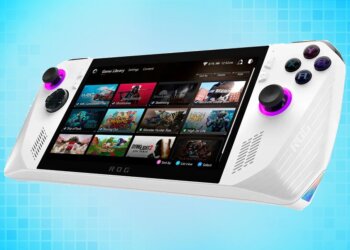The latest gameplay reveal for the Nintendo Switch 2 was packed with some truly exciting new offerings. But for me, the real showstopper was something familiar: Metroid Prime 4: Beyond. As a long-time fan of the series, having a chance to dive into the demo was like meeting an old friend, though it admittedly showcased a part of the game that kept new elements to a minimum. I suspect this slice of the game might be from the earlier stages, before Samus powers up with new telekinetic abilities.
During this brief, intense base-under-siege segment, Samus has her staple tools at her disposal—arm cannon, missiles, scanner, morph ball, and bombs, but nothing beyond that. To fans, these are tried and true features. The demo made Prime 4 feel like a straightforward follow-up to its predecessors. However, footage from other teasers suggests that’s just the beginning, as there are new powers and mechanics waiting to surprise us, even if this hands-on didn’t dive into them.
It’s quite evident that Nintendo and Retro Studios handpicked this particular segment. It’s engaging, yet straightforward, ensuring the focus remains on the core gameplay and how it performs on the new Switch 2 hardware.
As soon as I settled at the demo station, the Nintendo representative was quick to point out that the game runs at 120 frames per second. That kind of technical detail isn’t something Nintendo usually leads with, but seeing it in action, you understand why they’re making an exception.
True to their word, Metroid Prime 4 comes to life spectacularly on the Switch 2. It’s crafted for a system touted to be much less powerful than its actual capabilities might suggest—at least according to some of Nvidia’s more optimistic specs. Running at full HD, and offering a 4K option at 60fps, the game looks more polished than I’ve seen in any streamed version of the original Switch edition. The buttery smooth frame rate, in particular, feels like a bold leap for Nintendo, breaking from its traditional focus.
I’d love to say I stopped playing because I was content, but that wasn’t the case—I’ll get to that in a moment. I’m referring to the new mouse controls. As highlighted in my review of the console and the nifty Welcome Tour mini-games, Switch 2’s standout innovation is the ability to use a Joy-Con like a mouse by laying it on a flat surface—be it your thigh or a mat for certain games like Metroid.
Elsewhere during the Switch 2 unveiling, games like Civilization 7 highlighted these mouse controls, mirroring the experience players love on PC. When it comes to Metroid, although it’s pure metroidvania, or search-action if you prefer, the Prime series also dips into first-person shooter territory.
The mouse control integration in Metroid Prime 4 is a game-changer. The system smartly reads your actions, letting you switch seamlessly between traditional and mouse controls—no menus, no hassle. Hold the Joy-Cons normally to play like the older versions in the series, but the moment you orient the right one properly, it automatically switches to mouselook.
Whether you’re a PC veteran or new to this setup, trust me, mouselook feels spot-on. It’s responsive and natural, but what’s truly exciting is how effortlessly you can transition between control styles.
I found myself in a groove quickly, using the Joy-Con setup for exploration and scanning, while saving the precision mouse control for heated combat moments. By the time I faced the boss, I was in full mouse mode, targeting those classic glowing weak spots with ease, feeling like I had an advantage over those sticking to the traditional approach.
Experiencing this alongside the super-smooth 120fps gameplay felt almost like I was doing something unprecedented for a Nintendo title. It shows that top-tier performance doesn’t have to be out of reach, and we might finally be stepping beyond the performance frustrations of the original Switch.
As Metroid Prime 4: Beyond gears up for its release later this year, it might still launch on the original Switch, but for the quintessential experience, Switch 2 seems like the clear choice, living up to the kind of next-generation leap we all hope for.










![[PS5] Review of ELDRADOR CREATURES Shadowfall](https://www.pixbulletin.com/wp-content/uploads/2025/03/PS5-Review-of-ELDRADOR-CREATURES-Shadowfall.avif.avif)





























